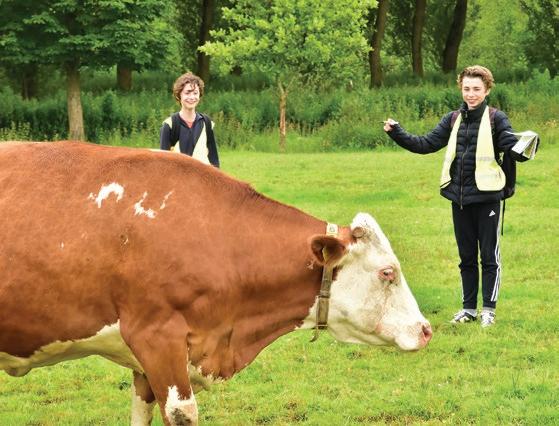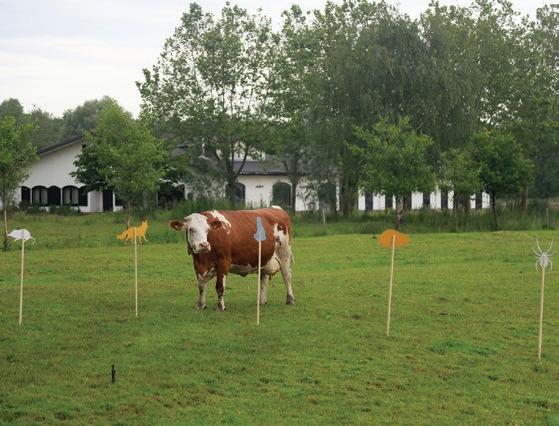Laura Cipriani


Laura Cipriani

Climate Change as a Game
Playful Pedagogies
Climate Change as a Game
Editor
Laura Cipriani / Department of Urbanism, Faculty of Architecture and the Built Environment, Delft University of Technology, The Netherlands / lauracipriani@post.harvard.edu / Orcid.org/0000-00027732-2425
Contributors
Laura Cipriani, Maguelonne Dejeant-Pons, Alison Goss, Xuejing He, Jiaming Huang, Sara van Keulen, Olivia Lensen, Fenne Manshande, Melissa Meertens, Sari Naito, Roberto Pasini, Valerio Perna, Janaina C.M. Schmittgens, Qianlin Xu, Yuhang Zhai
Keywords
Playful pedagogies / Children (co)design / Climate change game
Book Layout
Laura Cipriani with Jaming Huang
Cover Layout
Laura Cipriani. Image by Jaming Huang and Laura Cipriani, 2024
Book Series
Alleli Research N. 251
Publisher
LetteraVentidue Edizioni
In collaboration with TU Delft Open Publishing First edition october 2025
ISBN 979-12-5644-130-3
Press
Tipografia Skillpress, Fossalta di Portogruaro (Venice)
Project held at TU Delft / Faculty of Architecture and the Built Environment / The Netherlands
Sponsored by
This publication was made possible with funding from the National Education Research Organisation (NRO - Nationaal Regieorgaan Onderwijsonderzoek) / Project number 40.5.23865.022 Comenius Program 2023-2025 / Climate Change as a Game. (Co)Designing with Children the Landscape of the Future by Laura Cipriani


Disclaimer
Every attempt has been made to ensure the correct source of images and other potentially copyrighted material was ascertained, and that all materials included in this book have been attributed and used according to their license. If you believe that a portion of the material infringes someone else’s copyright, please contact: lauracipriani@post.harvard.edu
Edited and written by Laura Cipriani
Acknowledgements
Playful Pedagogies
Introduction The Art and Science of Play
Laura Cipriani
Part I — The Power of Play
1 / The Conference: The Power of Play
1.1 / Ludic Pedagogies: Landscape as the ‘Ground’ for Play
Laura Cipriani
1.2 / Beyond the Playground: Play as a Design Tool for Contemporary Urbanscapes
Valerio Perna
1.3 / Who is the Child in Nature? Ideas and Theories to Work with Alison Goss
1.4 / Landscape Education for Primary Schools: A Contribution of the Council of Europe
Maguelonne Déjeant-Pons
1.5 / Playing Becoming-Animal: (Co)explorations in the Sierra Madre Oriental
Roberto Pasini
Part II — The Course
2 / Exploring and Playing the Landscape
2.1 / Embracing the Site: Studying and Emboding Soil, Water, and Biodiversity
2.2 / ‘Becoming’ Landscape: The Explorative Workshop
3 / (Co)Designing the Landscape
3.1 / (Co)Designing with the Farmer: The Landscape Vision
3.2 / (Co)Designing with Children: The Diorama Workshop
4 / (Co)Creating the Landscape
4.1 / Whispering Wilderness: The Installation Workshop
4.2 / The Art of Learning: Between Emotions and Knowledge

In April 2024, the transdisciplinary seminar The Power of Play was held at TU Delft’s Faculty of Architecture and the Built Environment. Designed both as an introduction and a reflection on the upcoming Comenius Fellowship course, the seminar aimed to explore the broader pedagogical and creative potential of play—its grammar, emotional intelligence, and capacity to inform design strategies and (co)design practices. Central to the discussion was a simple yet profound question: how might engaging younger generations through play change the way we envision and shape landscapes in a changing climate? What are the pedagogical implications?
The diversity of speakers—architects, landscape architects, pedagogues, and even a legal scholar—offered a chorus of perspectives on the educational power of play. Their discussions moved fluidly between theory and practice, revealing how play can evoke emotion, nurture empathy, and cultivate new forms of ecological awareness. Throughout these dialogues, the landscape itself appeared not only as a subject of design but as an active participant in learning—a living classroom where curiosity, experimentation, and care intertwine.



Year 04
Cabbage Intensive fertilization

Crop rotation at Biesland Farm operates on a six-year cycle. Image by Jiaming Huang, 2024.
Year 05
Leave Vegetables, Lettuce Low fertilization

Year 06
Fruits, Sweet Pepper Intensive fertilization




Creating an artwork with the gathered plants and describing the species.

plants.

Part II — Exploring and Playing the Landscape

The instruction sheet for the bottle game explaining how to filter water through soil. Image by Janaina C.M.

Forest edge overlooking Biesland Farm in Delftse
The Landscape Vision
The collaboration with the farmer provided an opportunity to link design thinking with lived knowledge of the land. Together, the students and the farmer explored key questions: How will climate change affect this agricultural region—its soils, crops, and habitats? What actions can be taken in the short and long term to strengthen its resilience?
Two complementary design visions emerged from this exchange. The first focused on enhancing biodiversity and ecological connectivity, while the second explored transforming agricultural practices through strip cropping and paludiculture as strategies for climate adaptation and sustainable production.
From a landscape perspective, this vision presented a development plan for the Delftse Hout and Biesland Polder area, enhancing a crucial green corridor connecting Delft, Pijnacker, and Nootdorp. The proposal acknowledged the area’s ecological, recreational, and cultural importance for the surrounding urban communities. The plan was guided by three main principles: maintaining ecological balance, supporting sustainable development, and
A diagram showing the installation route and its shapes. Image by Jiaming


the
installation.

the installation on-site.
Rana arvalis
Rana aurora
The list of animals in the On the Earth installation. Image by course students, 2024.


cow is curious about the game: ‘Is it edible?’
Wild choreography dynamics set to the music notes of In the Jungle. Images by Laura Cipriani, 2024.
Today’s younger generations face a changing world as climate change alters landscapes and cities. How might we help them listen to these transformations? How can we encourage children and university students to imagine, design, and care for landscapes affected by climate change? And, perhaps most urgently, how do we rethink education itself—creating pedagogies and collaborations that connect primary and higher education through play, creativity, and action?
This book is the result of the Comenius Fellowship for didactical and pedagogical innovation—it became a collective learning experiment to act together for the planet. It aims to promote not only ecological and landscape literacy but also emotional and artistic bonds with nature, fostering hopeful engagement in the climate transition to explore, (co)design, and (co)create a new landscape together. Through the lens of play, the project opens up exploratory paths for learning. Play becomes a teaching method, a designed experience where doing and dreaming blend—where knowledge is gained through movement, storytelling, and creativity. By embracing new roles and perspectives, students and children explore different worlds, beings, and possibilities; and in doing so, they begin to see their own world in a new light. The eyes of the cows or those of the worms shape a different cosmos. Play, in this context, is not escape but a return—a return to curiosity, joy, and the vital pulse of coexistence. It is where learning becomes an act of hope, and where design, landscape, and imagination come together in a shared promise: that the future, like Earth itself, can still be shaped with care.

ISBN 979-12-5644-130-3 € 25
www.letteraventidue.com